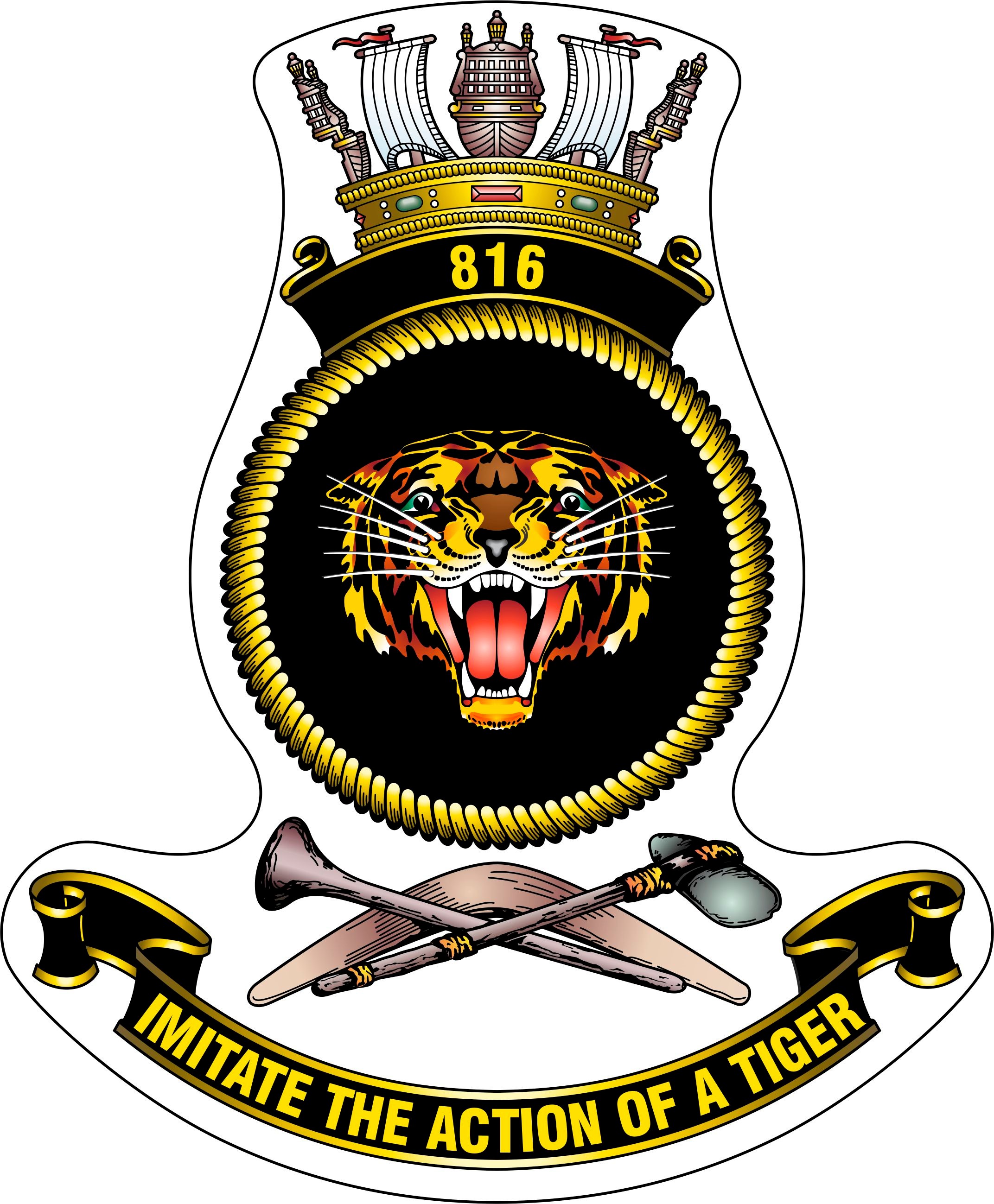- Author
- A.N. Other
- Subjects
- Naval Aviation
- Tags
-
- RAN Ships
- HMAS Albatross (Shore Establishment), 816 Squadron
- Publication
- March 2012 edition of the Naval Historical Review (all rights reserved)
By LCDR Nick Hattersley, RAN
“Once more unto the breach dear friends, once more;
Or close up the wall with our English dead.
In peace there’s nothing so becomes a man
As modest stillness and humility:
But when the blasts of war blows in our ears,
Then imitate the action of the Tiger;
Stiffen the sinews, summon up the blood,
Disguise fair nature with hard-favour’d rage;
Then lend the eye a terrible aspect.”
William Shakespeare “Henry V”
Our History
The Royal Australian Navy Fleet Air Arm Squadron 816 derives its motto “Imitate the action of the Tiger” from King Henry’s speech before the long forgotten Battle of Harfleur in August 1415. While not extending back centuries, in naval aviation terms, 816 Squadron’s history is long and distinguished with its origins stretching back to the Royal Navy where it was first commissioned as an anti-submarine squadron on 3 October 1939. Equipped with nine Fairey Swordfish torpedo bombers it notably took part in the first airborne torpedo attack of WW2. The Squadron’s affiliation with the Royal Australian Navy began on 24 August 1948 when the Squadron was commissioned at Royal Naval Air Station Eglington.
816 Squadron has since been de-commissioned and re-commissioned on a number of occasions and has operated Fairey Firefly’s, Fairey Gannets, Sea Venoms, Grumman S-2E/G Trackers; all fixed wing aircraft from the carriers HMAS Sydney and Melbourne. With HMAS Melbourne’s decommissioning 816 Squadron recommissioned as HU (Helicopter Utility) 816 Squadron on 9 February 1984 flying Wessex helicopters. HU 816 Squadron decommissioned on 30 June 1987. The Fleet Air Arm adopted USN prefixes during the early 1970s but later reverted to the Royal Naval method when the HU prefix was discontinued.
Current Operations
Located at HMAS Albatross on the NSW south coast 816 Squadron has been at the forefront of Australian Naval Aviation for the last two decades. The Squadron is home to approximately 290 men and women who fly and maintain 16 x S-70B-2 Seahawk helicopters. The Squadron trains maintenance personnel and aircrew as well as supporting fully operational Flights at sea which are attached to a number of HMA Ships.
Today’s 816 Squadron had its beginning on 8 February 1988 with the Seahawk Introduction and the formation of the Transition Unit (SITU) with the task of introducing the S-70B-2 Seahawk into the RAN. The SITU program was interrupted when on 2 August 1990 Iraq invaded Kuwait. Initially under the auspice of the United Nations Security Council Resolution 665 two Seahawk helicopters were embarked in HMA Ships Darwin and Adelaide as part of Operation Damask.
HS 816 (HS – Helicopter Anti Submarine) was officially re-commissioned on 23 July 1992; although at the time it had aircraft embarked in HMA Ships Canberra and Darwin and had been operational for a number of years. 816 Squadron has for the most part kept an operational flight embarked at sea within the Middle East Operating Area (Operations Damask, Slipper, and Catalyst) for nearly 20 years. These operations have included maritime interdiction, anti smuggling operations, Naval Gunfire Support and anti terrorism protection.
Medal for Gallantry
In 2004 POA Ben Sime (now CPOA Sime is currently serving as a Qualified Aircrewman Instructor at 816 Squadron) was awarded the Medal for Gallantry when a dhow laden with explosives detonated itself alongside USS Firebolt. An 816 Squadron Seahawk attached to HMAS Stuart was the first coalition asset on the scene and initially coordinated the rescue effort. CPOA Sime with total disregard for his own safety conducted a diver drop to provide assistance to a seriously injured American sailor. This individual act is consistent with the dedication and commitment personnel from 816 Squadron have shown whilst deployed. 816 Squadron is still to this day supporting anti piracy operations near the Horn of Africa.
Since its re-commissioning, 816 Squadron has been involved in a wide variety of operations which have demonstrated the capability of the S-70B-2 and the devotion and capacity of the personnel that fly and maintain them. Other notable involvements that the Squadron has distinguished itself include; being called upon during the 1998 Sydney to Hobart Rescue effort.

POA Pashley (now WOA Pashley) was awarded the Medal for Bravery and a further number of Bravery Citations were awarded to other 816 Squadron crews. In 2003 the Squadron was involved in Operation Anode (Solomon Island Assistance) and assisted Special Forces in boarding the North Korean drug ship Pong Su in April 2003 off the East Australian Coast.




